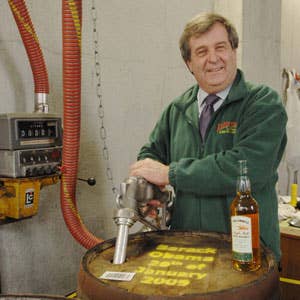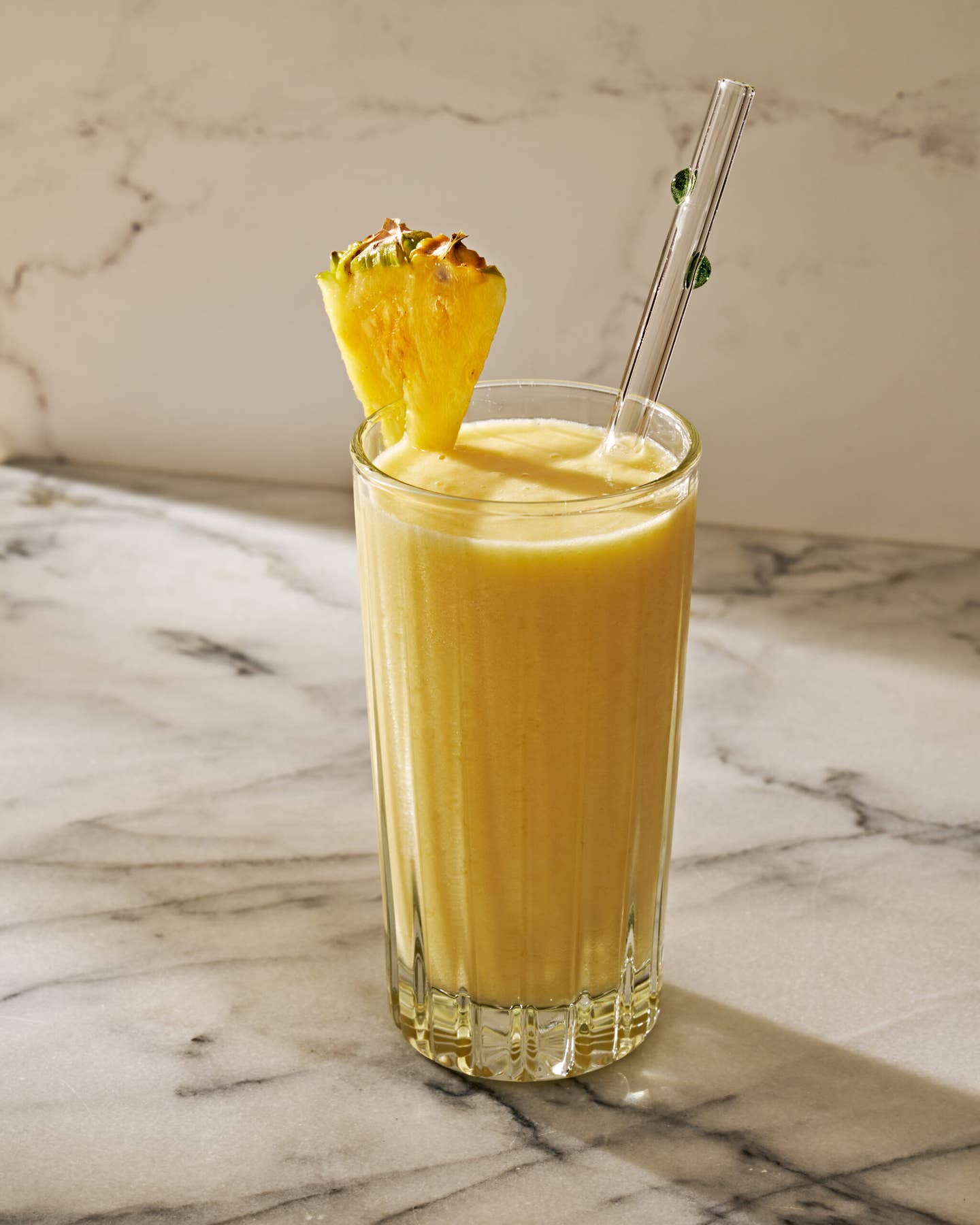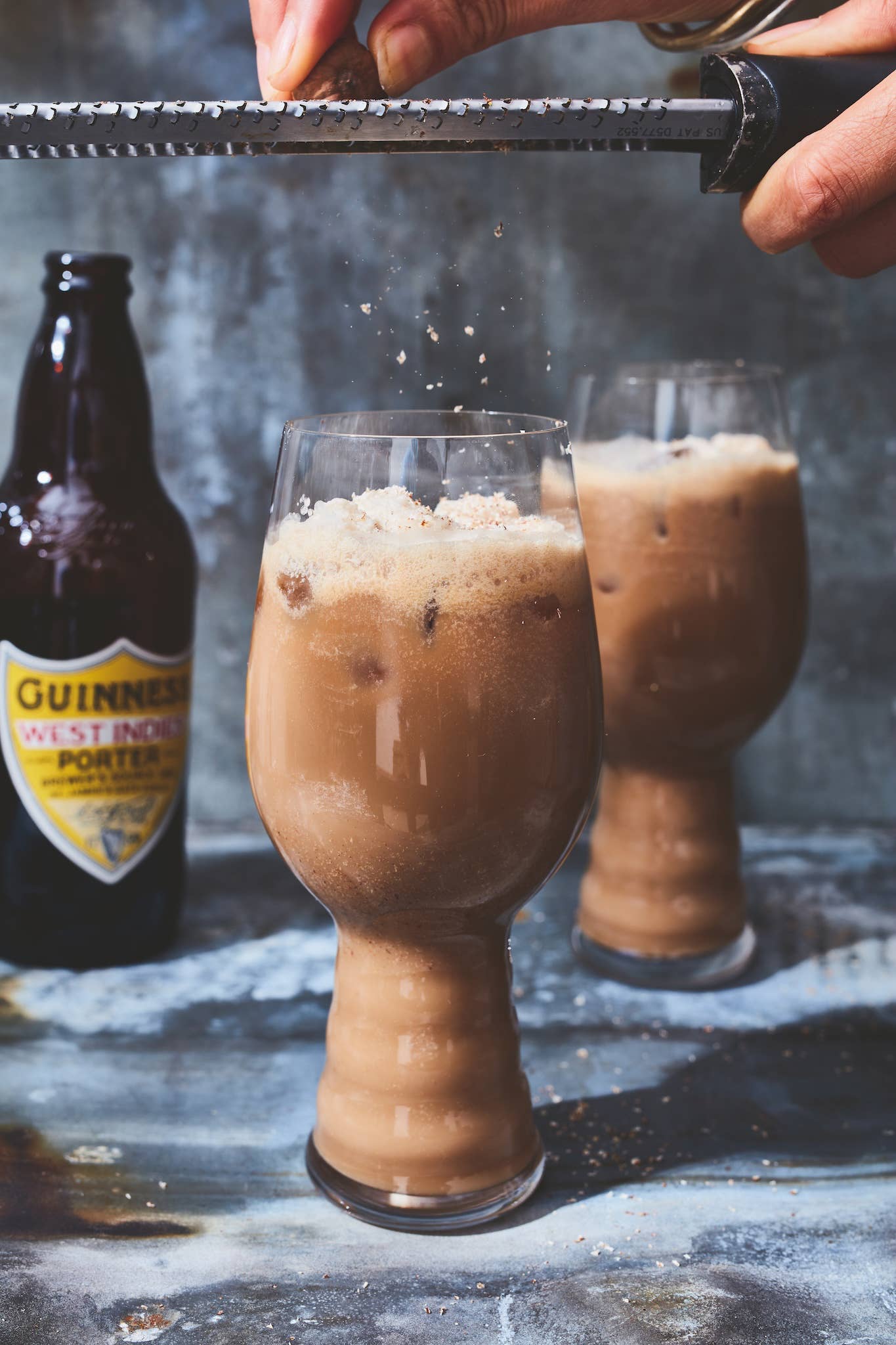
Irish Whiskey, Once Again Made by the Irish
In 1970, John Teeling, an Irish graduate student at Harvard Business School, did a case study on the history of Irish whiskey exports. His findings were bleak: Irish whiskeys, once a major contender in international markets, had experienced a dismal century. Prohibition in the States, two world wars, decades of economic isolation, and shifting tastes, among other factors, had devastated the once vibrant industry. Teeling suspected that he could turn it around.
Twenty-seven years later (after becoming chairman of several mining companies), he founded Cooley Distillery—the first new distillery to open in Ireland in more than a hundred years and the only Irish-owned distiller on the island (Bushmills and Midleton are owned by Diageo of Britain and Pernod-Ricard of France, respectively). Soon, under the direction of master blender Noel Sweeney and master distiller David Hynes (seen at left), Cooley was making Irish whiskey in styles not seen for 50 years and in some cases never at all: peat-smoked malt whiskeys, single-grain whiskeys, and single malts finished in madeira, sherry, and port casks. Since its bottles first hit the market, in the 1990s, Cooley has won more than 150 domestic and international awards. Recently, SAVEUR spoke by phone with Teeling from his offices in County Louth, in northeastern Ireland.
When you started making traditional whiskeys, like the peat-smoked single malts, it had been several decades since any Irish whiskey distillers had made them. Did you turn to anyone for help?
What could we do? There was an absolute monopoly on Irish whiskey, with only one distiller, Irish Distillers, so we brought in consultants from Scotland. We discovered very quickly that in order to survive we had to produce the highest-quality whiskey, so we adopted traditional production processes, like distilling with traditional pots and columns, casking in single-use oak barrels, and maturing those barrels in ancient granite warehouses.
What's your weirdest whiskey?
We were extremely innovative with the Greenore, which is a single-grain whiskey. Traditionally, grain whiskey was made to be thin, bland and consistent because it's used to blend with malts, but the Greenore is full-bodied, with notes of honey and vanilla. This is due to the fact that our column stills, which are used to produce the grain whiskey, are made of copper. Most column stills are made of stainless steel, which doesn't impart anything to the whiskey; copper - which is also used for the pot stills that distill malt whiskey — interacts with alcohol, so our stills lend a complex flavor to our grain whiskey.
You opened your distillery in part to bolster the standing of Irish whiskey in international markets. Have you been successful?
We always wanted to make whiskeys that appealed to a new generation, but I never anticipated that young people in the States would start to drink brown spirits with such enthusiasm. It's an amazing phenomenon.
Speaking of the States, what's this about an Obama whiskey?
The Obama whiskey is one of three custom-made single-malt distillations we've done in the past 30 years. The first cask was for my grandchild. The second was distilled on January 20, 2009, for Barack Obama. (In eight years, we intend to offer it to him.) The third one was casked about a month ago, when Ireland won what's known as the Grand Slam, the Northern Hemisphere Award Championship of rugby. The last time we won was in 1948, and my son Jack [who is the executive director of the company] and I are obsessive about rugby, so we distilled a cask of whiskey called the Grand Slam cask. We will offer it to the players once it's matured, and if they don't take it, we will.
Keep Reading
Continue to Next Story










